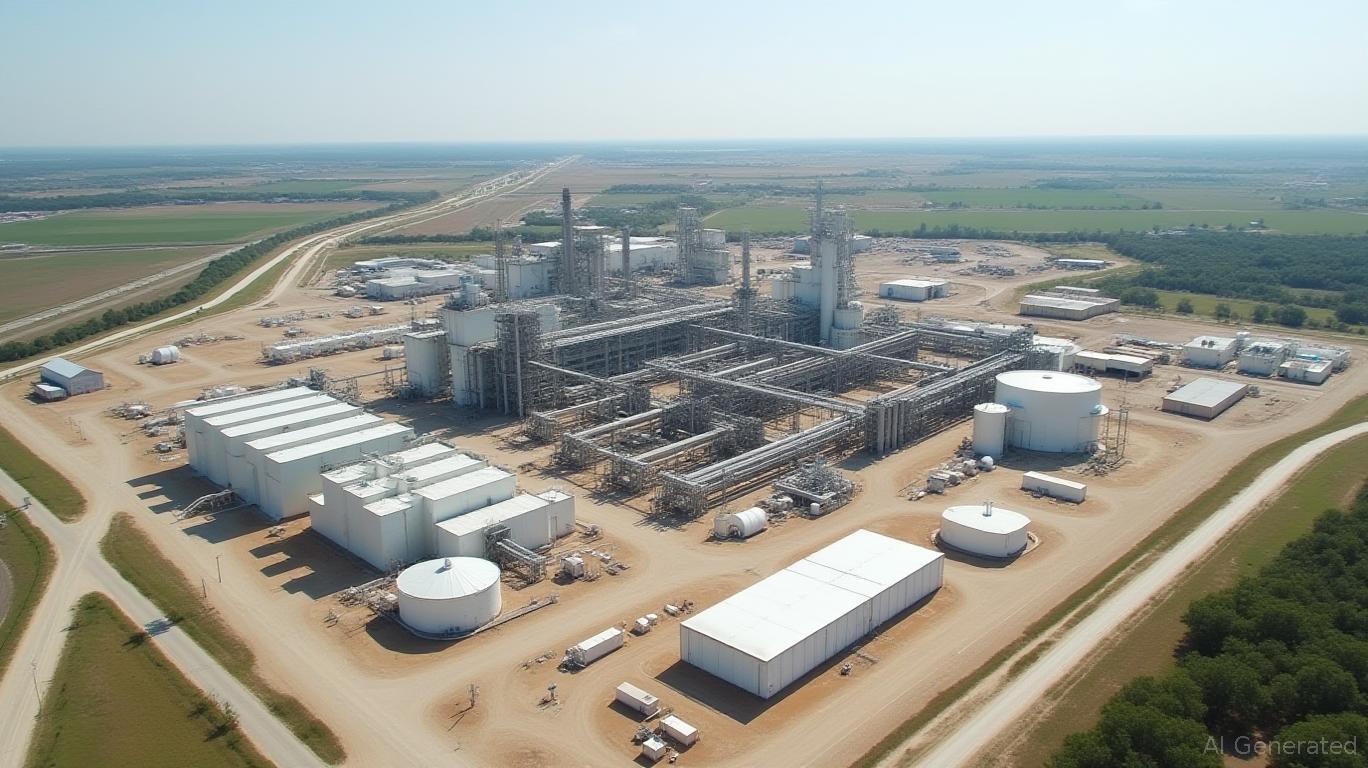Tronox (TROX): A Titanium Dioxide Play on Tariff-Driven Consolidation and Pricing Power Recovery
The global titanium dioxide (TiO₂) market is undergoing a seismic shift. Tariffs, trade wars, and environmental regulations are reshaping supply chains, squeezing out inefficient producers, and concentrating market power in the hands of firms with scale, sustainability, and geopolitical agility.
(NYSE: TROX), a leading pigment producer with a presence in North America, Europe, and Asia, stands at the epicenter of this transformation. Here's why investors should act now.Tariff Walls Are Raising Barriers to Entry—and Pricing Power
The U.S. Section 301 tariffs on Chinese TiO₂, now at 22%, have slashed Chinese exporters' competitiveness in American markets. While firms like Lomon Billions Group have relocated production to Malaysia and Mexico to bypass duties, the 40% rerouting of shipments through Vietnam and Mexico has created logistical bottlenecks. This fragmentation is driving consolidation: smaller producers in regions like Southeast Asia are struggling to navigate compliance costs and supply chain complexity, while giants like Tronox—with established facilities in Texas and Louisiana—are capitalizing on their domestic production advantage.

The data speaks volumes:
Despite market volatility, TROX has outperformed the broader index, reflecting investor confidence in its positioning.
EU Antidumping Duties and CBAM: A Double Win for Tronox
The EU's final antidumping duties on Chinese TiO₂ (up to 32.3%) and the Carbon Border Adjustment Mechanism (CBAM)—which imposes a €50/MT levy on high-emission imports starting 2027—are creating a dual opportunity for Tronox:
1. Pricing Power in Europe: European paint manufacturers, which rely on TiO₂ for 40% of raw material costs, will increasingly turn to compliant producers like Tronox. The company's chloride-based production facilities (vs. China's carbon-intensive sulfate methods) give it a 27% lower carbon footprint, making it CBAM-ready.
2. Market Share Gains: Chinese exporters face a stark choice: either absorb the EU tariffs or reroute shipments to less profitable markets like India or Brazil. Tronox's existing European distribution network** and R&D partnerships (e.g., with coatings firms to develop low-emission pigments) position it to capture this displaced demand.
Emerging Markets Are Fueling Demand—and Tronox's Growth
The TiO₂ market's 5.2% annual growth in Asia-Pacific (driven by construction in India and Vietnam) and 9% yearly demand in Africa (Nigeria, Kenya) is a tailwind for Tronox's diversified supply chain. Unlike Chinese rivals, which are reeling under U.S. and EU trade barriers, Tronox is leveraging:
- Nearshoring: Its Texas facilities qualify for U.S. tax incentives and circumvent tariffs.
- Strategic Partnerships: Collaborations with Mexican and Vietnamese firms under USMCA and CPTPP agreements allow it to relabel products and avoid duties.
The chart will show Tronox's cost advantage widening as tariffs and CBAM penalties bite Chinese imports.
Why Act Now? The Catalysts Are Clear
- 2025 Tariff Deadlines: By year-end, the EU's antidumping duties and U.S. Section 301 tariffs will be fully implemented, accelerating consolidation.
- CBAM Implementation (2027): Producers without green credentials will face margin erosion. Tronox's $120M investment in solar-powered production (mirroring Yunnan Xinli's strategy) is already paying dividends.
- Stockpile Depletion: Chinese exporters' pre-tariff stockpiling is nearing an end, and 2024 TiO₂ prices are projected to rise by 8-12% as supply tightens.
Risk Factors? Mitigated by Strategy and Scale
- Raw Material Volatility: Tronox's vertically integrated supply chain (controlling ilmenite mines in Australia and South Africa) shields it from feedstock shortages.
- Geopolitical Uncertainty: Its “China+2” production strategy (U.S. + Mexico/Indonesia) diversifies risk.
Conclusion: TROX Is the Titanium Play to Own
Tronox is not just a beneficiary of TiO₂'s structural tailwinds—it's a catalyst for industry consolidation. With tariffs and sustainability mandates squeezing out inefficient players, TROX's scale, green tech, and geographic flexibility make it a buy at current prices. The 2023-2025 tariff cycle is the sector's inflection point: investors who act now will capture the upside as Tronox's pricing power and market share surge.
Act fast—this is a rare opportunity in a market on the cusp of transformation.

Comments
No comments yet